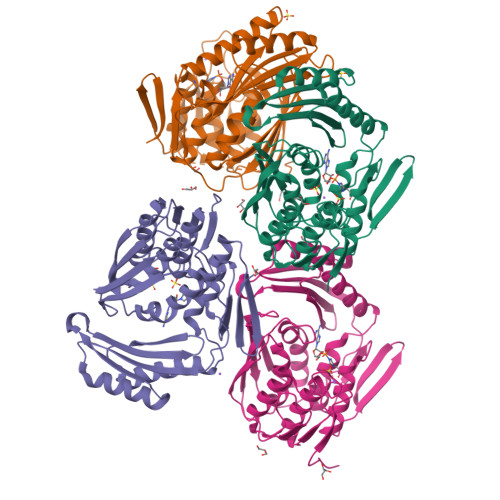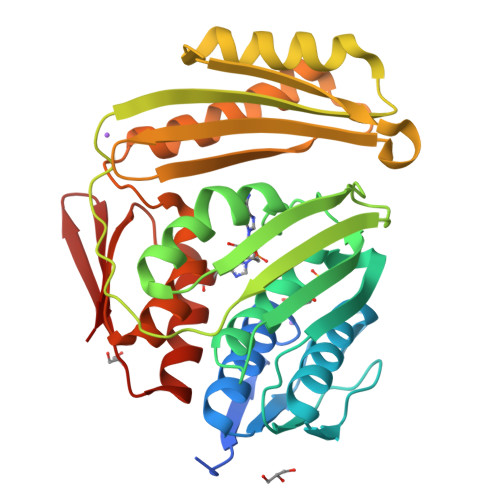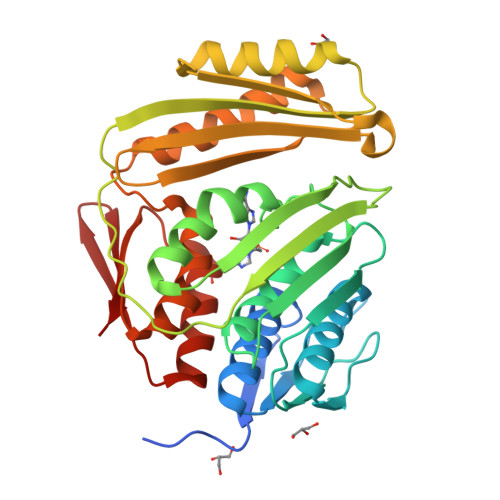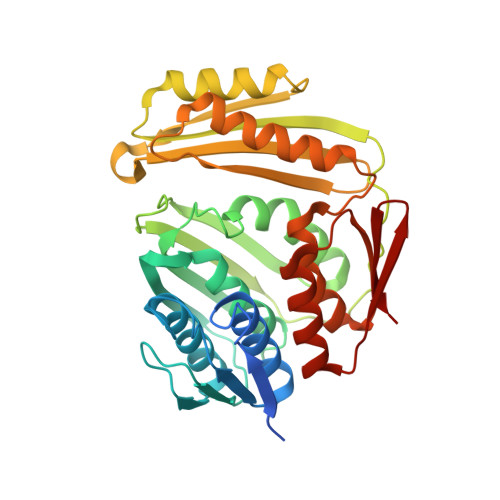Structure of the RNA 3'-phosphate cyclase-adenylate intermediate illuminates nucleotide specificity and covalent nucleotidyl transfer.
Tanaka, N., Smith, P., Shuman, S.(2010) Structure 18: 449-457
- PubMed: 20399182
- DOI: https://doi.org/10.1016/j.str.2010.01.016
- Primary Citation of Related Structures:
3KGD - PubMed Abstract:
RNA 3'-phosphate cyclase (RtcA) synthesizes RNA 2',3' cyclic phosphate ends via three steps: reaction with ATP to form a covalent RtcA-AMP intermediate; transfer of adenylate to an RNA 3'-phosphate to form RNA(3')pp(5')A; and attack of the vicinal O2' on the 3'-phosphorus to form a 2',3' cyclic phosphate. Here we report the 1.7 A crystal structure of the RtcA-AMP intermediate, which reveals the mechanism of nucleotidyl transfer. Adenylate is linked via a phosphoamide bond to the His309 Nepsilon atom. A network of hydrogen bonds to the ribose O2' and O3' accounts for the stringent ribonucleotide preference. Adenine is sandwiched in a hydrophobic pocket between Tyr284 and Pro131 and the preference for adenine is enforced by Phe135, which packs against the purine C2 edge. Two sulfates bound near the adenylate plausibly mimic the 3'-terminal and penultimate phosphates of RNA. The structure illuminates how the four alpha2/beta4 domains contribute to substrate binding and catalysis.
Organizational Affiliation:
Molecular Biology Program, Sloan-Kettering Institute, New York, NY 10065, USA.























